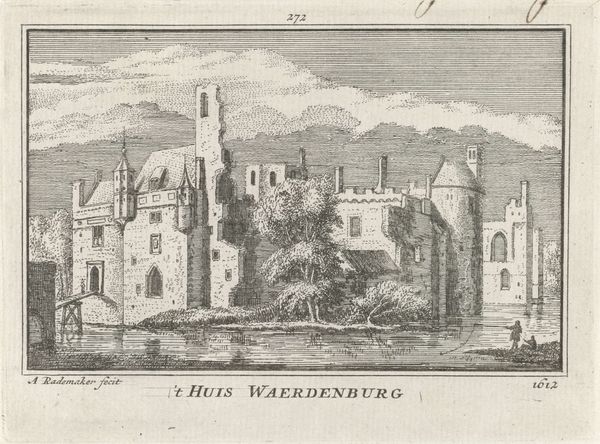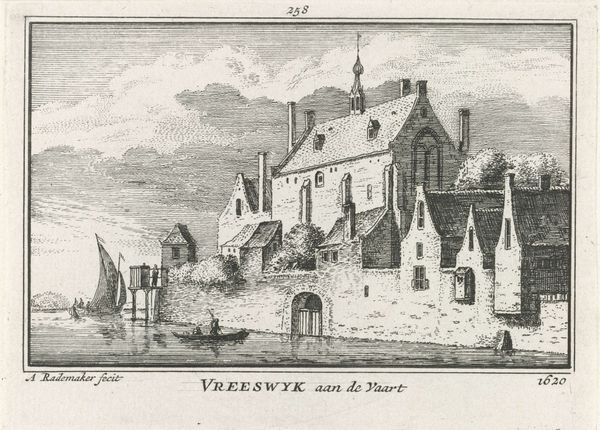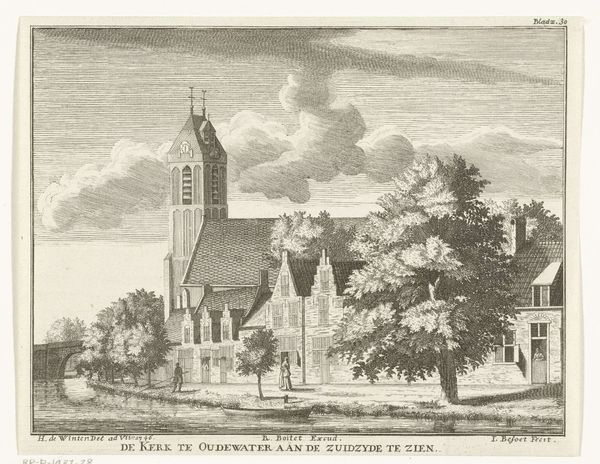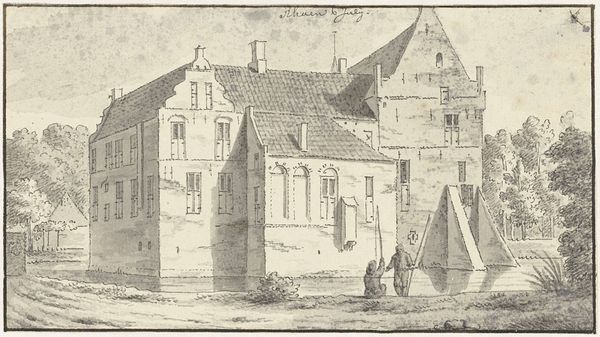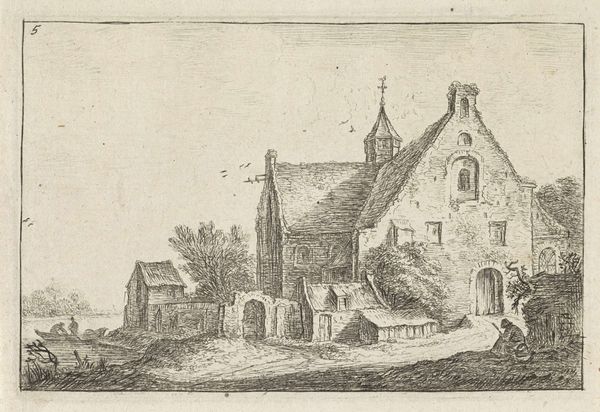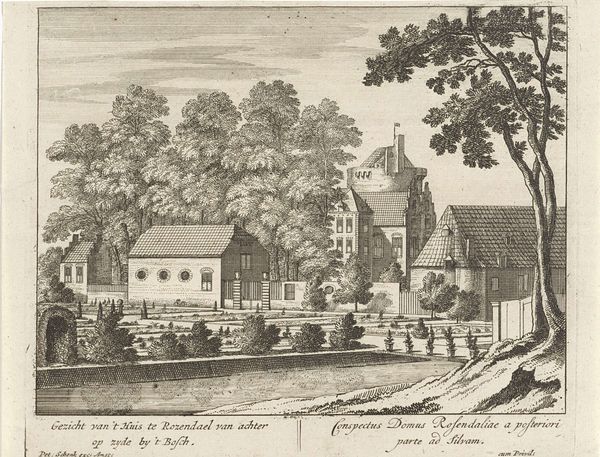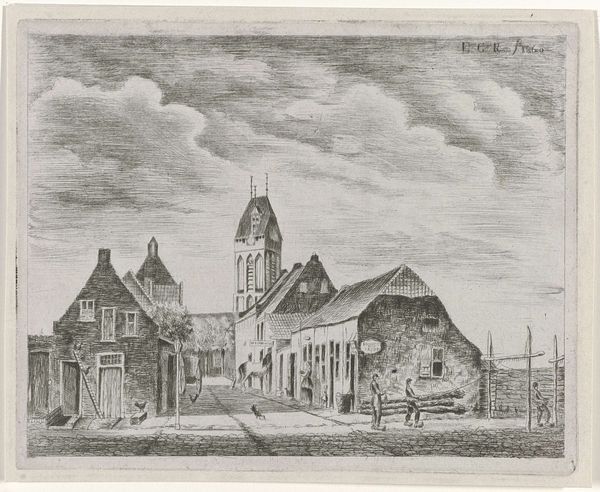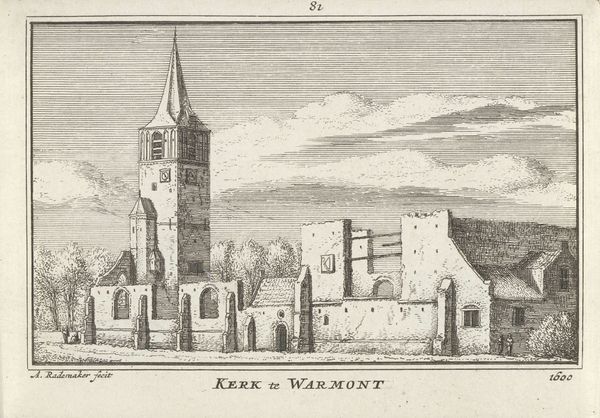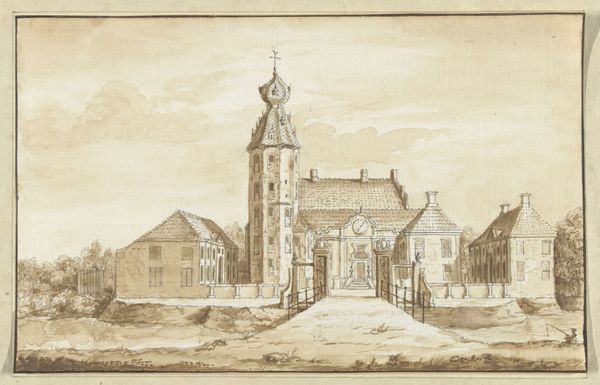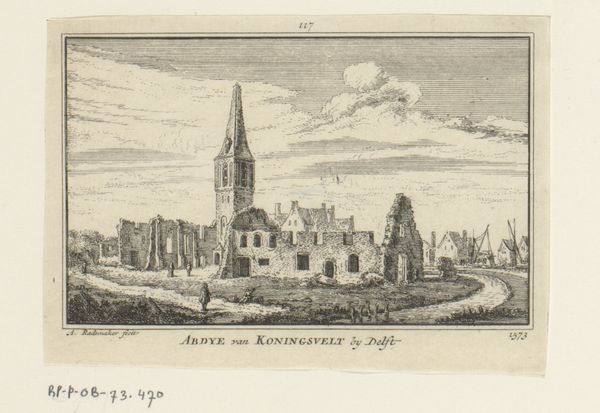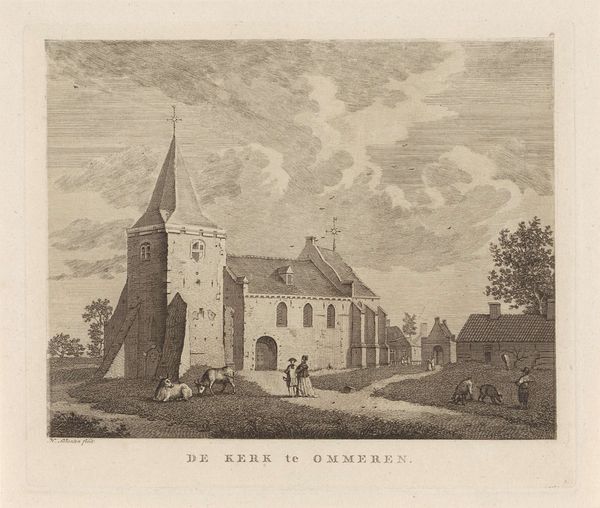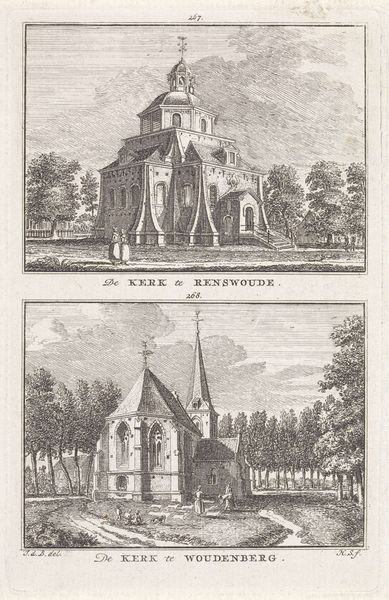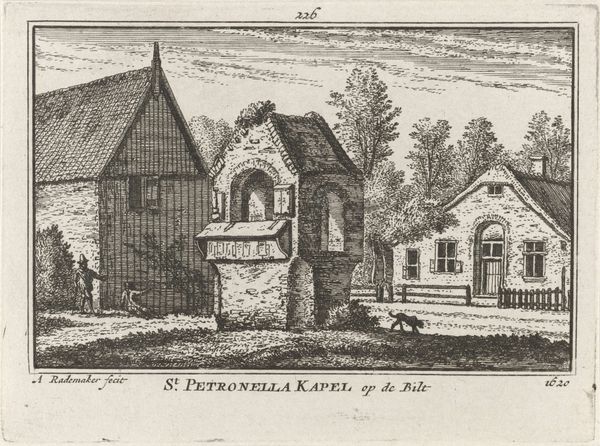
drawing, print, etching
#
drawing
#
baroque
# print
#
etching
#
old engraving style
#
landscape
#
cityscape
Dimensions: height 80 mm, width 115 mm
Copyright: Rijks Museum: Open Domain
Curator: Before us hangs "View of the Wittevrouwen Cloister in Utrecht," dating from 1727-1733 but depicting 1661, etched and printed by Abraham Rademaker. Editor: It's remarkable how the baroque style is captured with such delicate lines. The meticulous detail creates a sense of quiet monumentality, wouldn't you agree? Curator: Absolutely, and it's worth noting the significance of representing this specific site, a former cloister. Rademaker documented numerous historical and architectural locations in the Netherlands, giving us a glimpse into their social and political context. This building was taken over for protestant services following the Reformation and before becoming barracks. It also reminds us that buildings often undergo processes of gentrification where inhabitants of a place get slowly displaced due to economic changes. Editor: I see how that history infuses the piece, especially when analyzing its formal structure. Notice how the vertical lines of the church tower and chimneys contrast with the horizontal emphasis of the canal in the foreground. This juxtaposition adds dynamism. Curator: Indeed. This very construction shows a community adjusting to change. You have people on a sort of pilgrimage, a common act with complicated intersections. Editor: I also think the restricted grayscale palette serves the etching technique beautifully, highlighting the architectural precision and linear forms. Curator: But consider the choice to depict the cloister, particularly a cloister repurposed amidst religious and political upheaval. Rademaker's work subtly engages with questions of power, representation, and memory. He offers a lens to reflect on transformations within urban landscapes over time. Editor: Ultimately, this artwork beautifully blends observation with compositional acuity, allowing us to understand 17th-century Utrecht in great detail. Curator: And in that observation, prompts us to consider the weight of history and lived experiences embedded within these spaces.
Comments
No comments
Be the first to comment and join the conversation on the ultimate creative platform.
